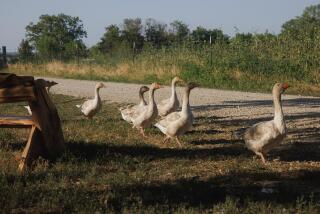Ants have been farming plants for millions of years, long before people did
Could ants get any cooler?
These amazing insects have been known to create rafts and bridges with their bodies and tend to vast fungus gardens. Now, a new study suggests they have also been farming plants for millions of years.
High in the trees of the island nation of Fiji, evolutionary biologist Guillaume Chomicki, a post-doc at the University of Munich in Germany, discovered a specialized community of ants that actively cultivate six species of plants.
DNA evidence suggests this farming behavior could go back as far as 3 million years, he said.
To put that in perspective, the earliest known evidence of human farming dates back to 23,000 years ago.
The ant-farmed plants are all members of the Squamellaria family, also known as “ant-plants.” They are epiphytic, meaning they grow on other plants, usually trees.
In a paper published this week in the journal Nature Plants, Chomicki describes how the industrious ants, a species called Philidris nagasau, are involved in nearly every aspect of the ant-plants’ life cycle.
Even before the Squamellaria’s fruit is ripe, the ants begin gathering its seeds by cutting through the fruit’s wall. Next, the ants sow the seeds in holes in the tree bark and guard them until they begin to sprout.
When the seedlings reach about three-quarters of an inch high, they begin to develop a soft, bulbous structure between the roots and the stem known as a domatium or “ant-house.” As soon as the domatium is big enough, the ants enter a cavity in it to defecate, providing the young plant with fertilizer.
So, what do the ants get in return?
First and foremost, a place to live.
As the Squamellaria continues to grow, its domatium grows as well, eventually measuring 8 to 16 inches across or more. This structure is a perfect home to ants, Chomicki said.
He described the inside as having “an incredibly complex system of interconnected galleries, which looks like a brain.”
All those folds maximize the nesting surface available to the ants. That’s good for the ants and good for the long-term health of the plant, Chomicki said. The more ants that live in the domatium, the more ant-fertilizer the plant receives.
Some species of Squamellaria sweeten the deal for the ants even more by providing sugar rewards that drip from their leaves.
Over the course of his research, Chomicki said he never encountered these ants living anywhere except in one of the six species of plants that they were observed to cultivate, nor did he see the plants living without the ants. That suggests the two organisms are now mutually dependent, he said.
This is not the first time farming behaviors have been observed in the animal kingdom.
The hairy-chested Yeti crab that lives along hydrothermal vents deep in the ocean farms sulfur-oxidizing bacteria on the hair of its chest and harvests it using a comb-like structure in its mouth.
Three-toed sloths in Costa Rica have been shown to encourage green algae to grow on their fur to supplement their nutrient-poor leafy diet.
And leaf-cutter ants are well known for keeping vast fungal farms that provide them with food.
However, Chomicki said the ant farmers of Fiji are the first known ants to farm plants rather than fungus.
He added that there is still more he would like to learn about the relationship between the ant farmers and their crops. For example, he noticed that the ants only defecate in particular cavities in the domatium. He suspects that the plant produces a chemical that tells the ant where to do their business.
He’s also curious to learn more about the genes that allow the plants to use the nutrients in the ant poop.
Do you love science? I do! Follow me @DeborahNetburn and “like” Los Angeles Times Science & Health on Facebook.
MORE IN SCIENCE
A switch to daylight saving time could be lifesaving for koalas, researchers say
Pluto has a cold, wandering heart, and maybe a hidden ocean too
In America, the rich outlive the poor by up to 9.5 years, study says







